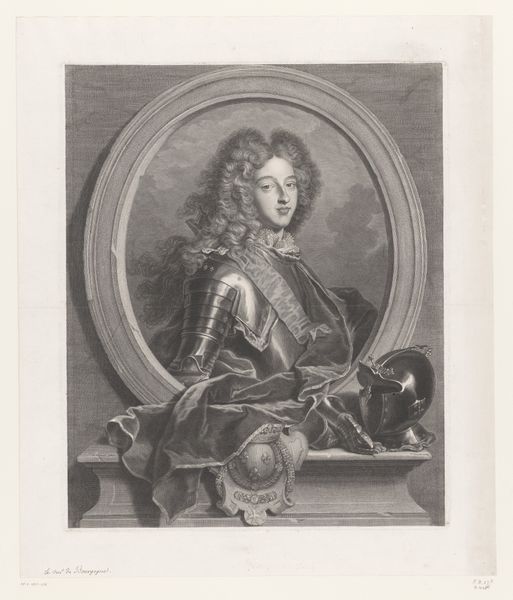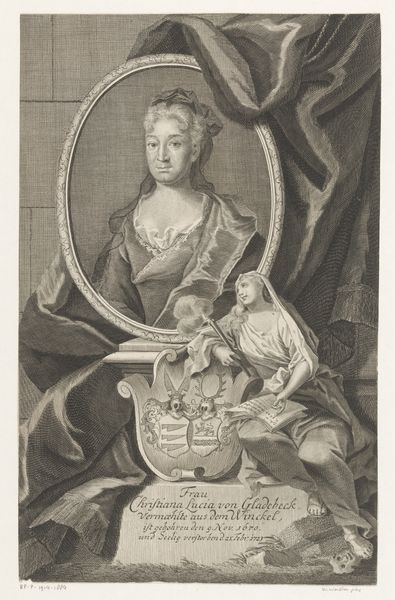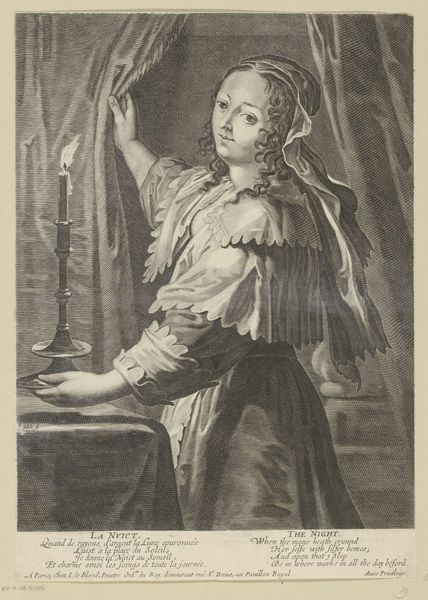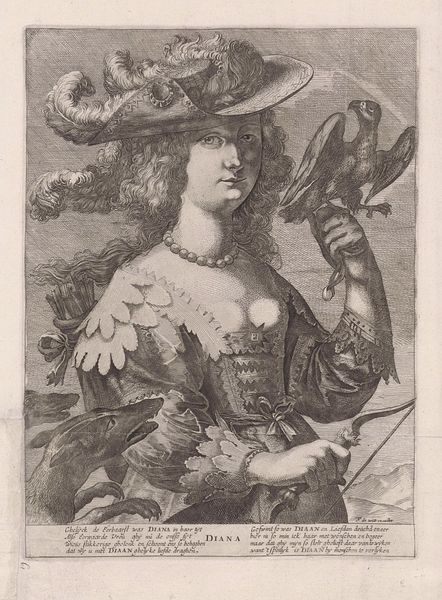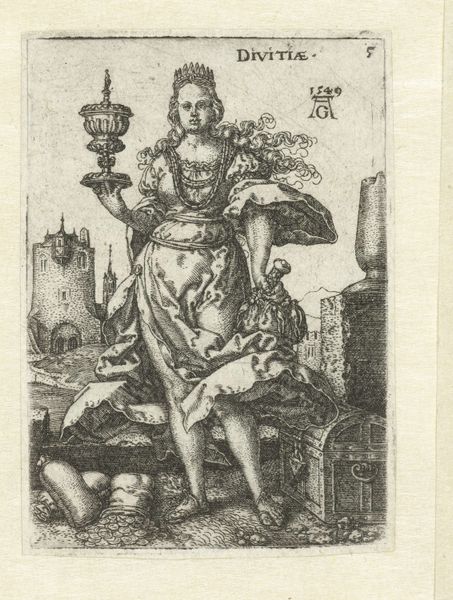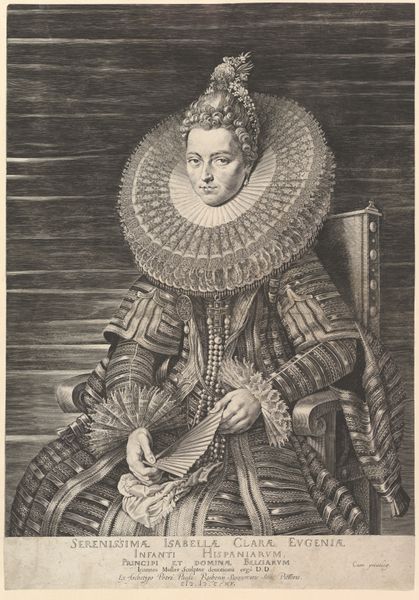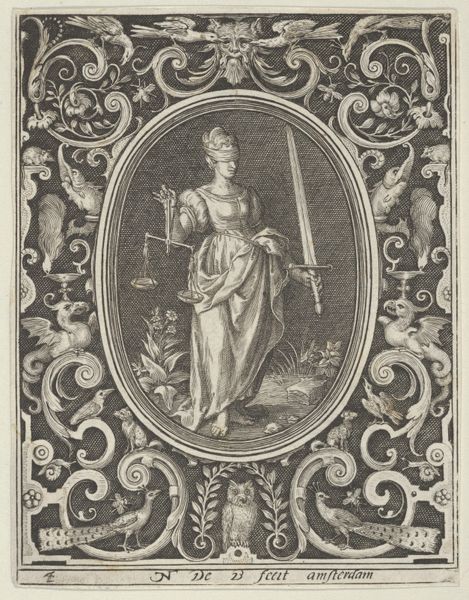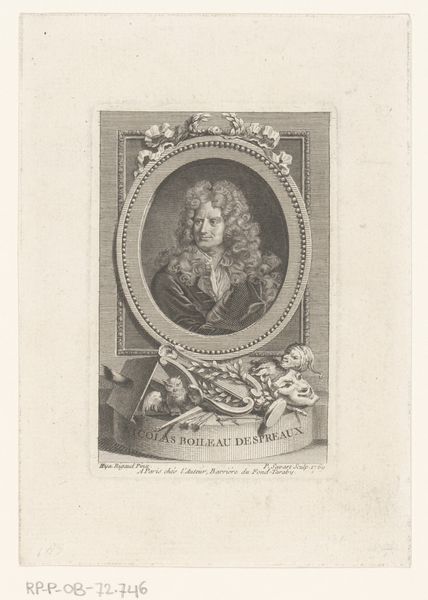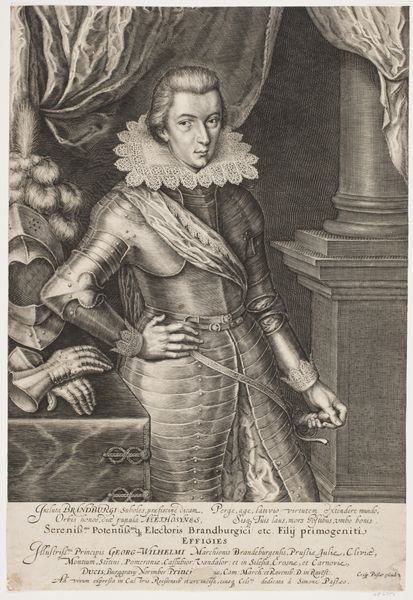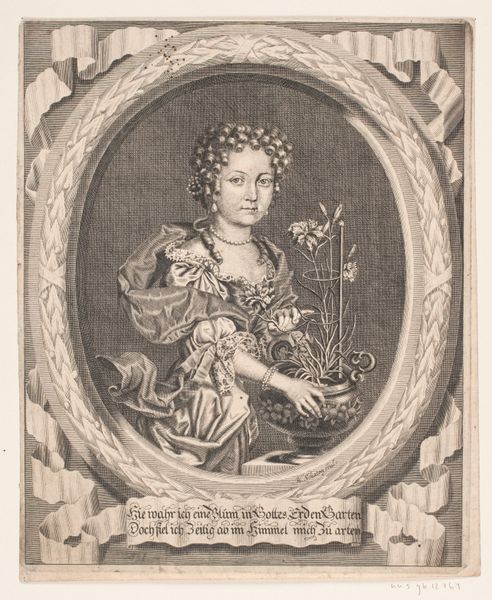
engraving
#
portrait
#
baroque
#
old engraving style
#
history-painting
#
academic-art
#
engraving
Dimensions: height 199 mm, width 145 mm
Copyright: Rijks Museum: Open Domain
Editor: So, here we have “Portret van Maximiliaan Emanuel II,” an engraving made sometime between 1691 and 1726 by Jan Baptist Goossens. The detail is amazing. He really conveys a sense of authority and, honestly, a bit of theatricality. How do you interpret this work? Curator: It's more than just theatricality; it’s carefully constructed authority. Look at how Maximilian Emanuel is positioned within this oval frame. He's encased in armor, literally and figuratively shielded. Who was Maximilian Emanuel II? And what power structures did he embody and perpetuate? This engraving serves to bolster a certain image of him and of the aristocracy he represents. Editor: Right, he was a powerful elector of Bavaria. So the armor, the pose... it’s all designed to project an image of strength and legitimacy. It feels like pure political propaganda. Curator: Exactly. The inclusion of his coat of arms, flanked by lions – symbols of courage and royalty – further reinforces that narrative. And it's not just about him as an individual, but also about the system he's part of. What’s striking is the historical amnesia these portraits encourage. They focus on inherited power, avoiding scrutiny of the often brutal ways this power was accumulated and maintained. Editor: It’s interesting how the art style itself, the Baroque with its ornate detail, adds to that sense of grandeur, almost obscuring the realities of power dynamics at the time. It makes you think about how visual representation is used to justify historical narratives. Curator: Precisely. This isn't simply a portrait; it's a carefully crafted statement about power, privilege, and the visual strategies employed to normalize inequality. Examining the historical context and applying a critical lens to such portraits, we can decipher not only what they present, but what they actively conceal. Editor: It changes my perspective on the piece, seeing how it participates in a larger narrative of power and historical representation. Thanks for sharing your point of view. Curator: My pleasure. The conversation itself opens new pathways to approach a single work of art and allows one to be critically engaged with cultural heritage and narratives of power.
Comments
No comments
Be the first to comment and join the conversation on the ultimate creative platform.

